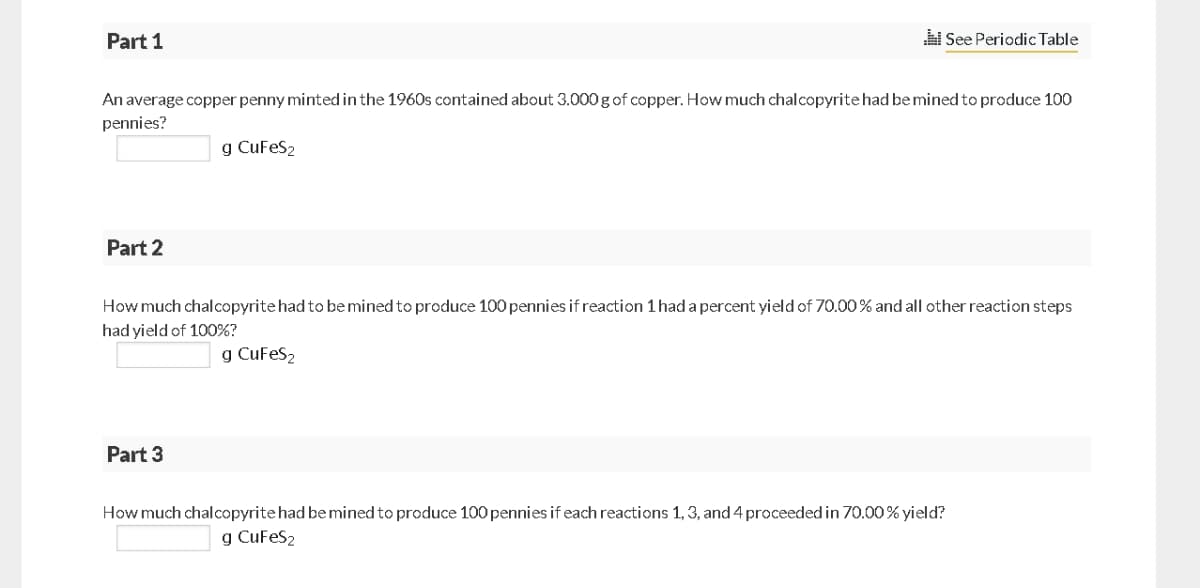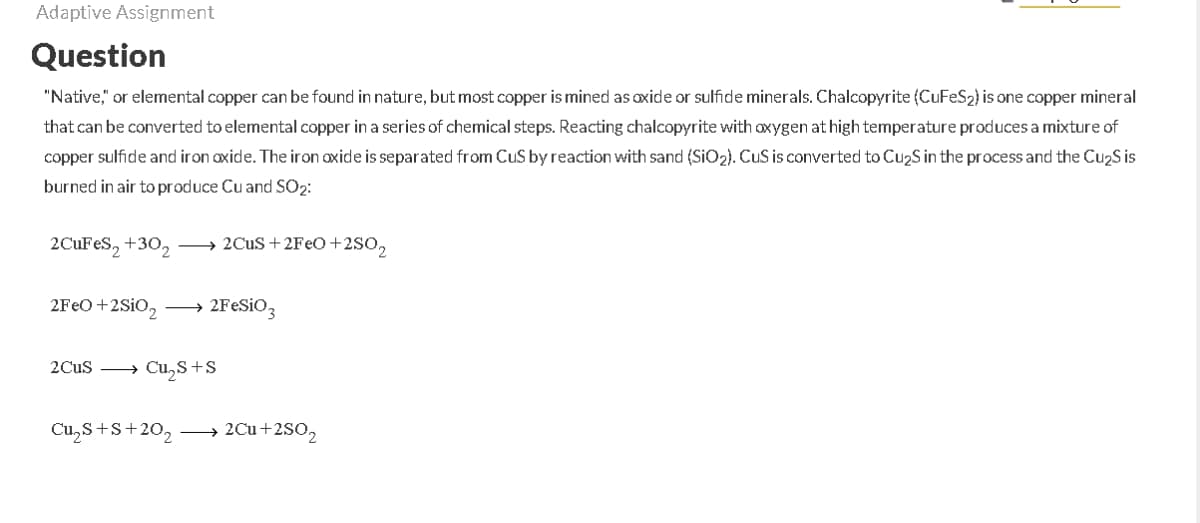"Native," or elemental copper can be found in nature, but most copper is mined as oxide or sulfide minerals. Chalcopyrite (CuFeS2) is one copper mineral that can be converted to elemental copper in a series of chemical steps. Reacting chalcopyrite with oxygen at high temperature produces a mixture of copper sulfide and iron axide. The iron oxide is separated from CuS by reaction with sand (SiO2). CuS is converted to Cu2S in the process and the Cu2S is burned in air to produce Cu and SO2: 2CUFES, +30, → 2CuS + 2FeO+2SO, 2FEO+2SIO, → 2FeSio,
States of Matter
The substance that constitutes everything in the universe is known as matter. Matter comprises atoms which in turn are composed of electrons, protons, and neutrons. Different atoms combine together to give rise to molecules that act as a foundation for all kinds of substances. There are five states of matter based on their energies of attraction, namely solid, liquid, gases, plasma, and BEC (Bose-Einstein condensates).
Chemical Reactions and Equations
When a chemical species is transformed into another chemical species it is said to have undergone a chemical reaction. It consists of breaking existing bonds and forming new bonds by changing the position of electrons. These reactions are best explained using a chemical equation.


Trending now
This is a popular solution!
Step by step
Solved in 4 steps






